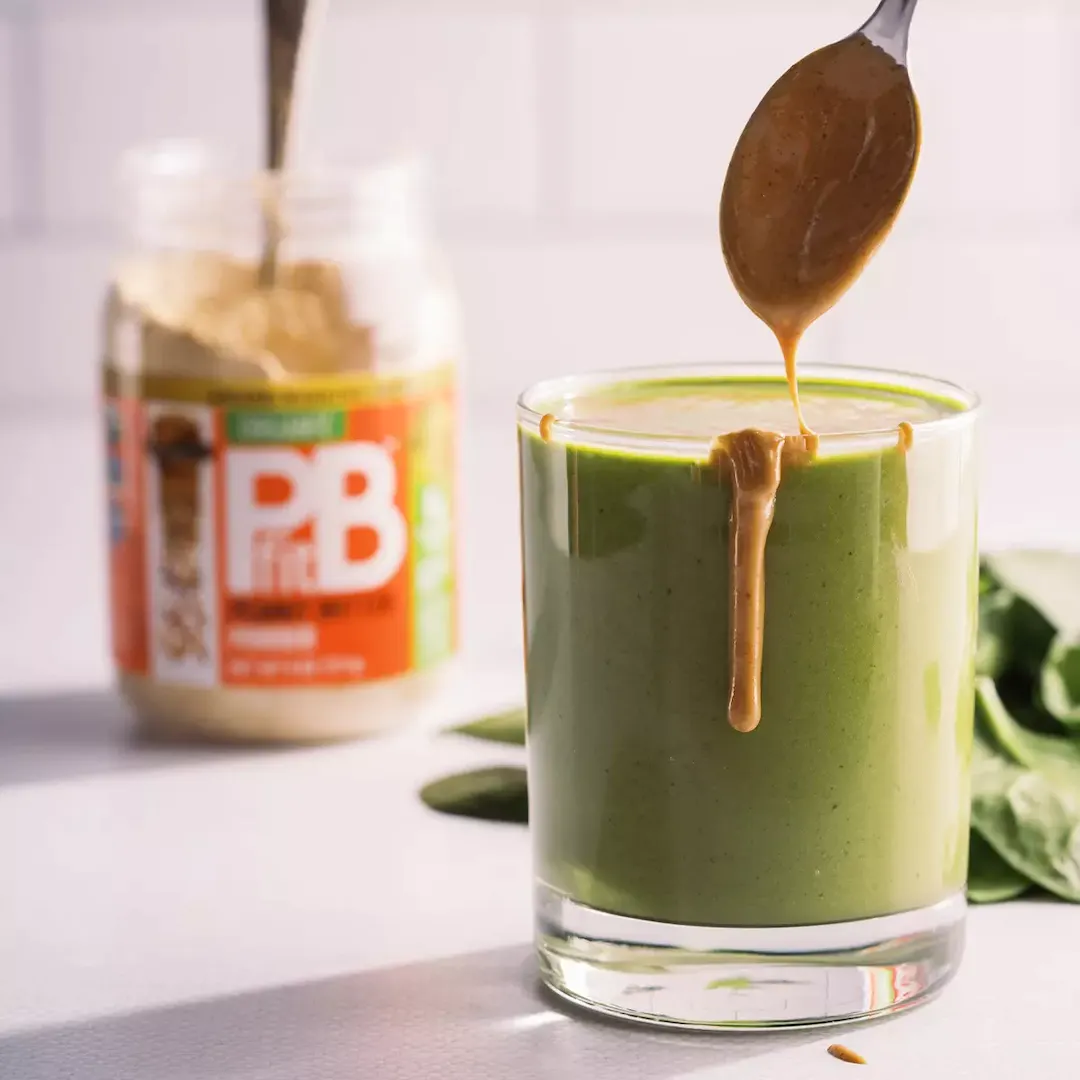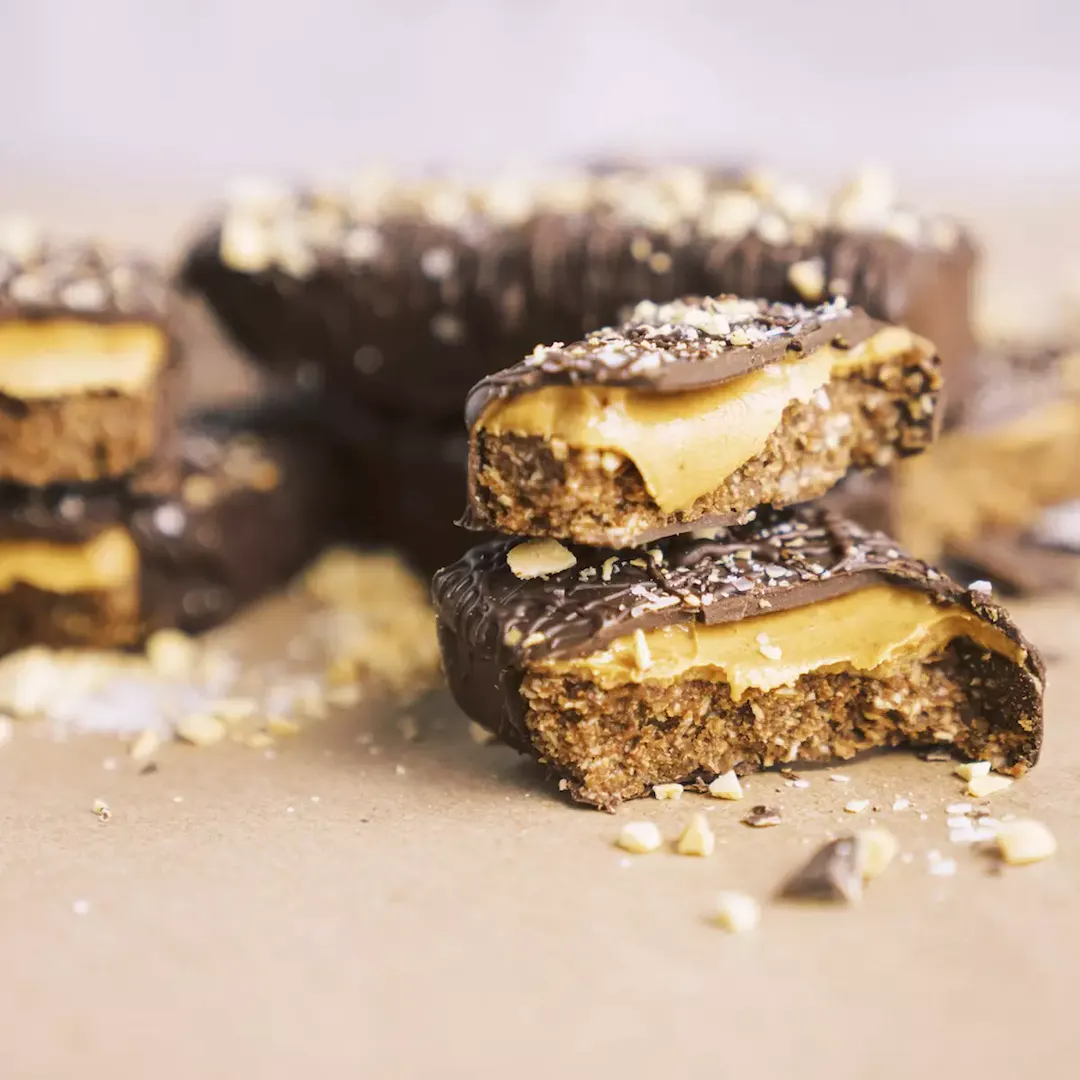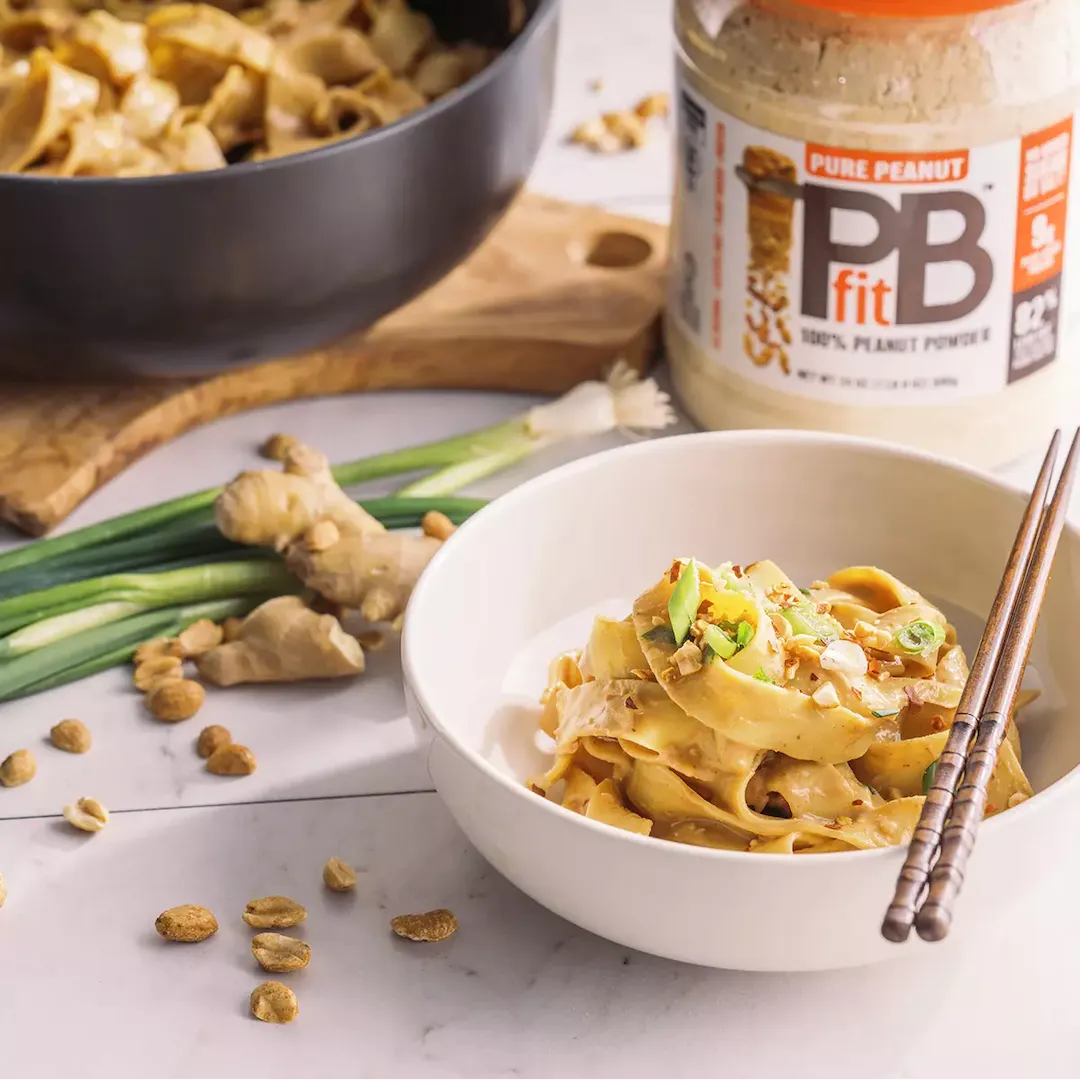| |
10 Reasons to Try Peanut Butter Powder (Plus Recipes)
If you're a peanut butter lover, you will surely love peanut butter powder. Peanut butter powder is a relatively new product that has recently gained popularity, especially among health-conscious foodies. If you want to learn more about this versatile ingredient, read on.
In this post, we will explore what peanut butter powder is, how it is made, and its benefits. We will also share the differences between peanut butter powder and regular peanut butter and some delicious recipes you can make.
What is peanut butter powder?
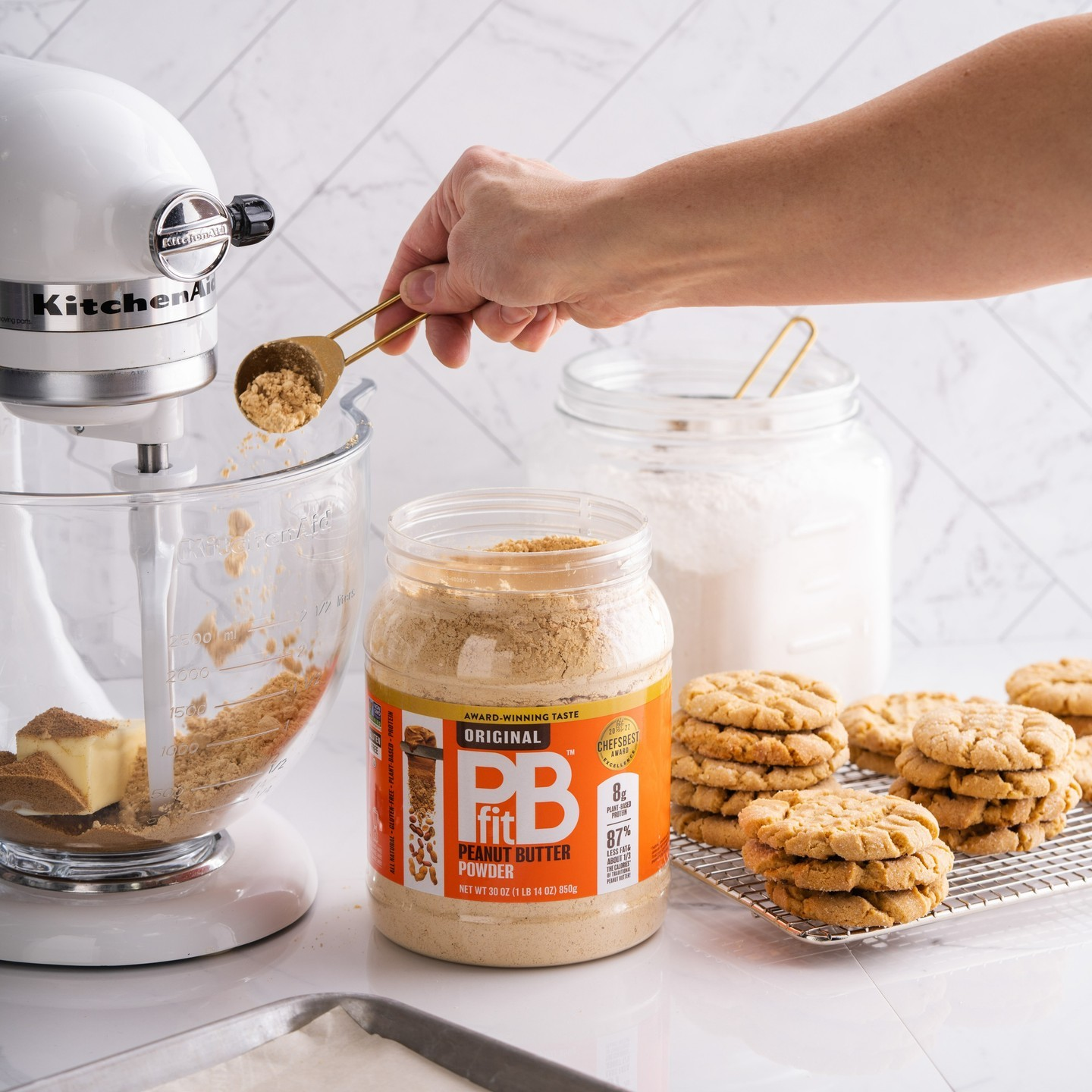
Peanut butter powder is a type of peanut butter that has been dehydrated and had most of its oil removed, resulting in a dry and fine powder. It is a low-calorie and low-fat alternative to traditional peanut butter but still offers the same great taste. It is a versatile and delicious ingredient that can add a nutty flavor and a protein boost to your meals, snacks, and drinks.
How is peanut butter powder made?
The process of making peanut butter powder typically involves the following:
Roasting the peanuts: The first step in making peanut butter powder is to roast the peanuts. This helps to bring out their natural oils and flavors, making the final product more aromatic and flavorful. The peanuts are typically roasted at a high temperature for a short time to prevent burning and ensure that they are evenly roasted.
Removing the skin: Once the peanuts are roasted, the next step is to remove their skin. This can be done either manually or with the help of a machine. The skin is removed because it can be bitter and affect the final product's flavor.
Grinding the roasted peanuts: After the skin is removed, the peanuts are ground into a fine powder. At this stage, some manufacturers may add sugar, salt, or other flavorings to enhance the taste of the final product. The grinding process is usually done in several stages to ensure the peanut powder is smooth and fine.
Pressing the powdered peanut: The final step in making peanut butter powder is to press the powdered peanut to remove any remaining oil. This helps reduce the powder's fat content and makes it easier to mix into recipes. The peanut powder is typically pressed using hydraulic presses or a centrifuge to separate the oil from the peanut solids.
The resulting peanut butter powder is a convenient and delicious ingredient you can use as an alternative to the peanut butter spread.
Types of peanut butter powder
There are various types of peanut butter powder you can choose from depending on your preferences and recipe. Here are some types of peanut butter powder:
Original peanut butter powder: Most peanut butter powder products on shelves labeled as Original usually contain peanuts with some salt and sugar.
Pure peanut butter powder: This variation is made only of roasted peanuts. No salt, sugar, flavorings, or other additives are included in the product.
Organic peanut butter powder: Organic and
 all-natural peanut butter powders use organic peanuts, which makes a great option if you want a more sustainable option.
all-natural peanut butter powders use organic peanuts, which makes a great option if you want a more sustainable option. Flavored peanut butter powder: Some PB powder products come in different flavors - from chocolate to berry-flavored powders.
Other types: Other variations of peanut butter powder include sugar-free, added protein, and added peanut pieces.
Why you should try peanut butter powder (benefits of PB powder)
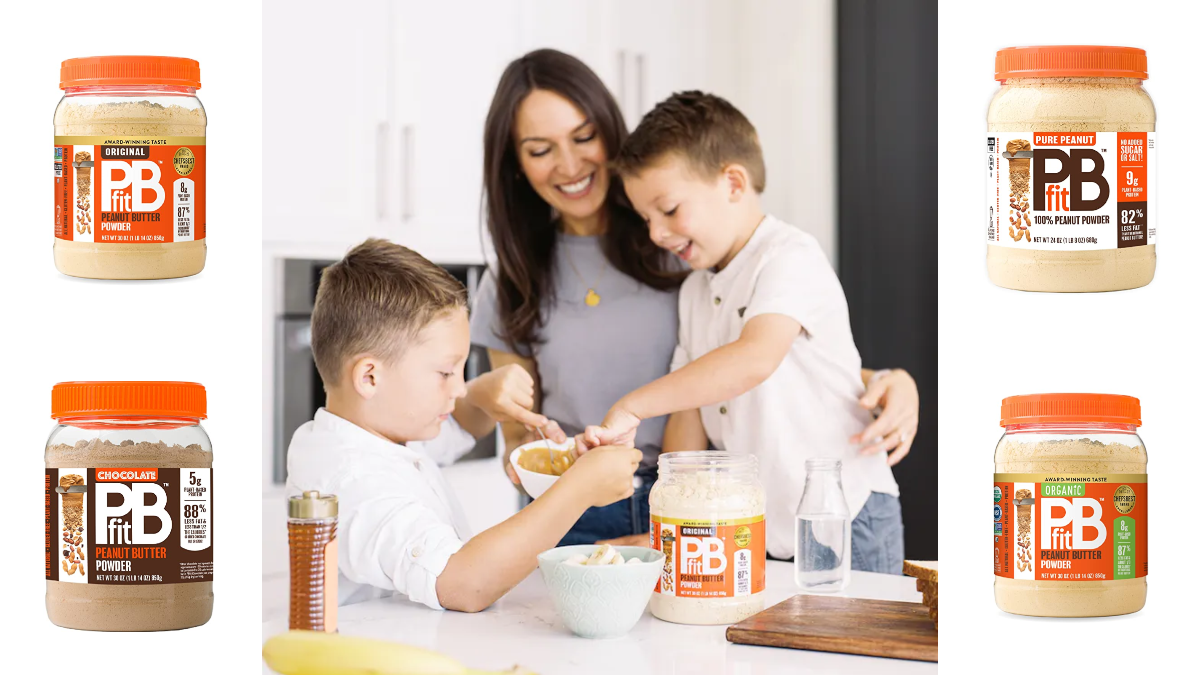
Peanut butter powder has been gaining popularity in recent years, and for a good reason! Here are ten reasons why you should give peanut butter powder a try:
Lower calorie count: Peanut butter powder is made by removing the natural oils from roasted peanuts, resulting in a much lower calorie count than traditional peanut butter. This makes it an excellent option for those looking to cut calories or maintain a healthier diet.
High in protein: Peanut butter powder is also high in protein, making it a great addition to smoothies or a topping for oatmeal or yogurt. Protein is vital for building and repairing muscle and maintaining a healthy immune system.
Versatile: Peanut butter powder can be used in various recipes, from smoothies and baked goods to savory dishes like stir-fries and sauces. Its mild flavor and powder form makes it a convenient ingredient to use in many different types of recipes.
Shelf-stable: Because peanut butter powder doesn't contain the natural oils found in traditional peanut butter, it has a longer shelf life. You can store it at room temperature for extended periods. This makes it a great pantry staple for those who don't want to worry about their peanut butter going bad.
Nutritious: Peanut butter powder is a good source of vitamins and minerals like vitamin E, magnesium, and potassium. It also contains healthy fats and fiber, which can help promote satiety and keep you feeling full for longer periods of time.
Lower fat content: As mentioned earlier, peanut butter powder is made by removing the natural oils from roasted peanuts, resulting in a lower fat content than traditional peanut butter. This makes it a good option for those looking to reduce their fat intake.
Gluten-free: Peanut butter powder is naturally gluten-free, making it an excellent option for celiac disease or gluten sensitivity.
Plant-based protein: Peanut butter powder is a great source of plant-based protein, making it a good option if you are a vegetarian or a vegan who may struggle to get enough protein in your diet.
Convenient for travel: Peanut butter powder is lightweight and doesn't require refrigeration, making it an excellent option for travel or camping trips. Simply mix with water or add to recipes for a quick and easy source of protein.
Cost-effective: Peanut butter powder is often more cost-effective than traditional peanut butter. You can also purchase it in bulk and store it for later use.
Peanut butter powder vs. regular peanut butter
The emergence of peanut butter powder products has left many consumers wondering if the powdered form is better than the original peanut butter. Let's take a look at the differences between the two.
Differences between PB powder and regular PB
Here are some key differences between peanut butter powder and regular peanut butter:
Consistency: One of the most significant differences between peanut butter powder and regular peanut butter is their consistency. Peanut butter powder is a dry, fine powder made by removing most of the oil from roasted peanuts. On the other hand, regular peanut butter is a spreadable paste made by grinding roasted peanuts and adding oil and other ingredients like sugar, salt, or preservatives to give it a creamy texture.
Nutrition: Peanut butter powder generally contains less fat and calories than regular peanut butter, making it a healthier option. Peanut butter powder is typically lower in fat because most of the oil is removed during processing and usually has no added sugar or salt. On the other hand, regular peanut butter may contain added sugar, salt, or hydrogenated oils, which can increase calorie and fat content.
Convenience and versatility: Peanut butter powder is often marketed as a more convenient option for those who want the taste of peanut butter without the mess or calories. You can easily mix it into smoothies, oatmeal, or baked goods. It is also a popular ingredient in many recipes.
Is peanut butter powder better than regular peanut butter?
If you're wondering what the better option is, the answer depends on you. Regular peanut butter gives you a great consistency if you want a creamy spread on your sandwich. However, if you want a lower fat and calorie content, peanut butter powder is the better option for you. Plus, it is more versatile, cost-effective, and shelf-stable than the peanut butter spread.
How to use peanut butter powder
You can use peanut butter powder in many ways. Here are some ideas:
Smoothies: Add a scoop of peanut butter powder to your favorite smoothie recipe for an extra boost of protein and peanut butter flavor.
Baked goods: Use peanut butter powder to replace some of the flour in baked goods recipes, such as cookies, for added flavor and protein.
Sauces and dressings: Mix peanut butter powder with soy sauce, vinegar, and other seasonings to make a delicious sauce or dressing for salads, vegetables, or meats.
Peanut butter spread: Mix peanut butter powder with water or milk to make a creamy peanut butter spread. This is a great option if you're trying to cut down on calories or fat, as the powder contains less than regular peanut butter.
Seasoning: Add peanut butter powder to soups and stews for added flavor and thickness. Use it as a seasoning for savory dishes such as stir-fries.
Breakfast and snack bowls: Mix the powder with yogurt, oatmeal, or cereal for a nutritious breakfast or snack. You may also use it as a topping for smoothie bowls, along with fruits, nuts, and other toppings.
Coating: Use the peanut butter powder as a coating for chicken or tofu for a crunchy, flavorful crust.
Peanut butter powder is a great ingredient to have on hand for adding flavor, protein, and nutrition to a wide range of dishes.
Remember to read the package instructions for the particular brand of peanut butter powder you're using, as the recommended amount and method of use may vary.
Peanut butter powder recipes for health, fitness, and culinary enthusiasts
Whether you just want to have something healthy or you are a fitness or culinary enthusiast, here are some easy and delicious peanut butter powder recipes you can try.
Peanut butter green smoothie
This recipe is perfect for health enthusiasts looking for a quick and nutritious drink for breakfast or snack.
Ingredients:
2 Tbsp PBfit Organic
1 frozen banana
¼ cup vanilla Greek yogurt
¾ cup cold unsweetened milk of choice
2 handfuls of baby spinach
Instructions:
Blend all the ingredients in a high power until smooth.
Add more milk if the smoothie is too thick for you.
Once the consistency is to your liking, pour the smoothie into a glass. Drizzle with a little peanut butter spread or PBfit peanut butter powder.
Enjoy your delicious, healthy, and protein-packed smoothie!
Chocolate peanut butter protein bars
Fitness buffs will love this recipe because it's a great way to get a boost of protein and energy before or after a workout. They're easy to make and last in the refrigerator for a week.
Ingredients:
5 Tbsp
 PBfit Organic Plus
PBfit Organic Plus2 cups quick oats
8 soft medjool dates, pitted
¼ cup water
2 Tbsp honey or maple syrup
1 tsp pure vanilla extract
¼ tsp salt
Topping:
1 cup PBfit Protein Peanut Butter Spread
Coating:
1 ¼ cups dark chocolate chips
1 Tbsp coconut oil
Optional toppings:
Salt or chopped peanuts
Instructions:
Combine oats, dates, water, Organic PBfit Plus Chocolate, honey, vanilla extract, and salt in a food processor. Process until the mixture begins to form a ball. Stop once in a while to scrape the sides down as needed.
Pour the mixture into an 8x8 pan lined with parchment paper. Press down until flat and even.
Spread the PBfit Protein Peanut Butter Spread. Freeze for a few hours until firm.
When the filling has set, melt your chocolate chips and coconut oil in a bowl and set aside.
Take the filling from the freezer and transfer to a cutting board. Cut into 12 bars.
Dunk each bar in the melted chocolate to coat.
Set on a chilled and lined metal tray.
Sprinkle with salt and chopped nuts if desired.
Place in the fridge or freezer for 20 minutes before serving.
Enjoy your Chocolate Peanut Butter Protein Bar! Keep your leftovers refrigerated.
Peanut noodles
This recipe is perfect for culinary enthusiasts who love to make or try Asian-inspired dishes. It is a delicious noodle dish perfect for a quick dinner.
Ingredients:
1 cup
 PBfit Pure Peanut
PBfit Pure Peanut 16 oz thick noodles
2 large cloves garlic, minced
1 Tbsp fresh grated ginger
1 Tbsp avocado oil
4 Tbsp low sodium soy sauce or coconut aminos
1 to 1 1/2 cups water
1 Tbsp rice vinegar
1 Tbsp toasted sesame oil
½ tsp red pepper flakes
Instructions:
Bring a large pot of water to a boil. Cook noodles according to package instructions.
Heat avocado oil in a pan.
Saute minced garlic over low heat for 2-3 minutes or until golden brown.
Add in the grated ginger and saute for 1-2 more minutes.
Put in the soy sauce, vinegar, sesame oil, red pepper flakes, and PBfit peanut butter powder.
Add in water and continue cooking for 1-2 minutes. If the sauce is too thick, add a little more water. If too thin, add a little more PBfit peanut butter powder.
Toss noodles with the sauce.
Garnish with green onions and chopped peanuts and enjoy!
If you want to add heat to this recipe, simply top with red pepper flakes.
Conclusion
Peanut butter powder is a versatile ingredient that you can use to add flavor, nutrition, and texture to various recipes. Not only is it packed with protein and healthy fats, but it also has a variety of uses. From smoothies to baked goods, you can add peanut butter powder to almost anything! Plus, it's a great way to reduce calories and fat in recipes while still getting all the delicious taste of peanut butter.
Are you ready to give peanut butter powder a try?
Simple Purchase LLC
Service Area
We serve customers worldwide.
Hours of Operation
For any product-related questions, please reach out to Amazon Customer Service.

